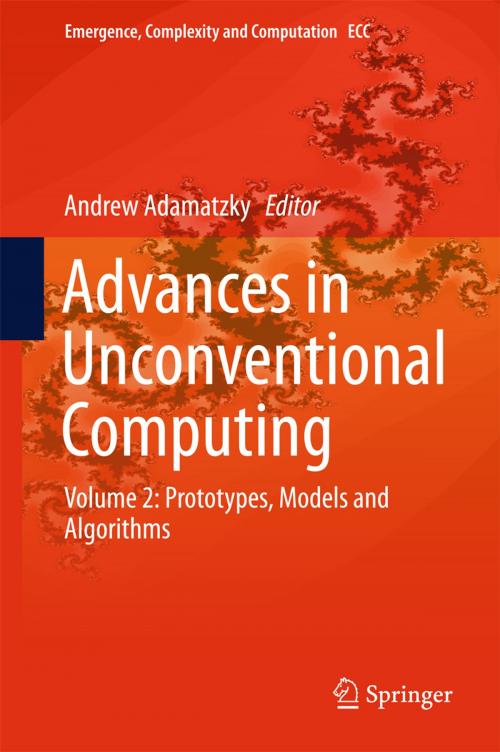Advances in Unconventional Computing
Volume 2: Prototypes, Models and Algorithms
Nonfiction, Computers, Advanced Computing, Artificial Intelligence, General Computing, Science & Nature, Technology| Author: | ISBN: | 9783319339214 | |
| Publisher: | Springer International Publishing | Publication: | July 26, 2016 |
| Imprint: | Springer | Language: | English |
| Author: | |
| ISBN: | 9783319339214 |
| Publisher: | Springer International Publishing |
| Publication: | July 26, 2016 |
| Imprint: | Springer |
| Language: | English |
The unconventional computing is a niche for interdisciplinary science, cross-bred of computer science, physics, mathematics, chemistry, electronic engineering, biology, material science and nanotechnology. The aims of this book are to uncover and exploit principles and mechanisms of information processing in and functional properties of physical, chemical and living systems to develop efficient algorithms, design optimal architectures and manufacture working prototypes of future and emergent computing devices.
This second volume presents experimental laboratory prototypes and applied computing implementations. Emergent molecular computing is presented by enzymatic logical gates and circuits, and DNA nano-devices. Reaction-diffusion chemical computing is exemplified by logical circuits in Belousov-Zhabotinsky medium and geometrical computation in precipitating chemical reactions. Logical circuits realised with solitons and impulses in polymer chains show advances in collision-based computing. Photo-chemical and memristive devices give us a glimpse on hot topics of a novel hardware. Practical computing is represented by algorithms of collective and immune-computing and nature-inspired optimisation. Living computing devices are implemented in real and simulated cells, regenerating organisms, plant roots and slime mould.
The book is the encyclopedia, the first ever complete authoritative account, of the theoretical and experimental findings in the unconventional computing written by the world leaders in the field. All chapters are self-contains, no specialist background is required to appreciate ideas, findings, constructs and designs presented. This treatise in unconventional computing appeals to readers from all walks of life, from high-school pupils to university professors, from mathematicians, computers scientists and engineers to chemists and biologists.
The unconventional computing is a niche for interdisciplinary science, cross-bred of computer science, physics, mathematics, chemistry, electronic engineering, biology, material science and nanotechnology. The aims of this book are to uncover and exploit principles and mechanisms of information processing in and functional properties of physical, chemical and living systems to develop efficient algorithms, design optimal architectures and manufacture working prototypes of future and emergent computing devices.
This second volume presents experimental laboratory prototypes and applied computing implementations. Emergent molecular computing is presented by enzymatic logical gates and circuits, and DNA nano-devices. Reaction-diffusion chemical computing is exemplified by logical circuits in Belousov-Zhabotinsky medium and geometrical computation in precipitating chemical reactions. Logical circuits realised with solitons and impulses in polymer chains show advances in collision-based computing. Photo-chemical and memristive devices give us a glimpse on hot topics of a novel hardware. Practical computing is represented by algorithms of collective and immune-computing and nature-inspired optimisation. Living computing devices are implemented in real and simulated cells, regenerating organisms, plant roots and slime mould.
The book is the encyclopedia, the first ever complete authoritative account, of the theoretical and experimental findings in the unconventional computing written by the world leaders in the field. All chapters are self-contains, no specialist background is required to appreciate ideas, findings, constructs and designs presented. This treatise in unconventional computing appeals to readers from all walks of life, from high-school pupils to university professors, from mathematicians, computers scientists and engineers to chemists and biologists.















